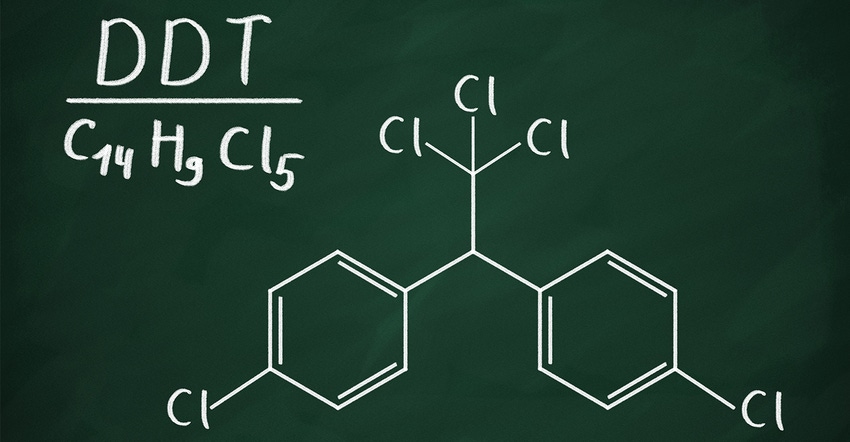September 4, 2017

There was a time when DDT was the most popular chemical around. Witness this item from the Nov. 1, 1947, Kansas Farmer: “It’s DDT Time Again, This Time Wallpaper.” Yep, that’s right. DDT wallpaper had been in tests for 27 months, the article said, and was proven to kill flies, cockroaches, mosquitoes, silverfish, ants, moths, bedbugs and spiders.
Rooms papered with DDT wallpaper had a 100% kill rate in 24 hours and tests indicated the effectiveness lasted for months, even if the wallpaper was washed or brushed. It did not brush off like the DDT dusting powder, and its effectiveness lasted longer than powder or spray.
60 years ago
An experiment conducted in Missouri was making news back in November of 1957. The experiment proved that caged hens lay larger eggs and produced eggs with a higher percentage of thick albumen than hens raised on the floor. However, a higher percentage of eggs laid by floor-managed birds were free of blood and meat spots. The tests were done using white leghorn hens.
50 years ago
By November of 1967, combined state and federal gasoline taxes averaged 10.5 cents per gallon and raised about $8 billion. The federal gasoline tax began as a temporary measure in 1932 when Congress levied a tax of a penny a gallon to raise money to meet the financial crisis of the Great Depression. Fifty years later, in 2017, the combined federal and state tax averaged 24 cents per gallon. So much for temporary.
30 years ago
Computers were just beginning to be a farming tool in November of 1987. A free computer seminar offered to farmers in Kansas and Missouri brought in speakers who explained how a computer could benefit farming operations and offered advice about what to look for in software and equipment.
20 years ago
The impact of a very strong El Niño was a major factor in world crops and prices in the fall of 1997. The weather event was already affecting crops in China, Australia and Argentina by November. Surveys were showing that farmers planned to plant 5% to 8% more soybeans in South America, but the aftereffects of El Niño were a major factor in how many of the acres would be harvested.
Goerzen is executive director or Old Cowtown Museum in Wichita, where she lives with her husband, Matt; four children, three cats and a dog.
About the Author(s)
You May Also Like




